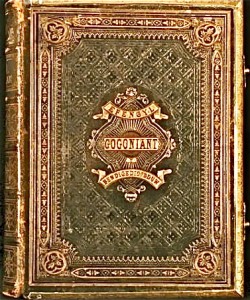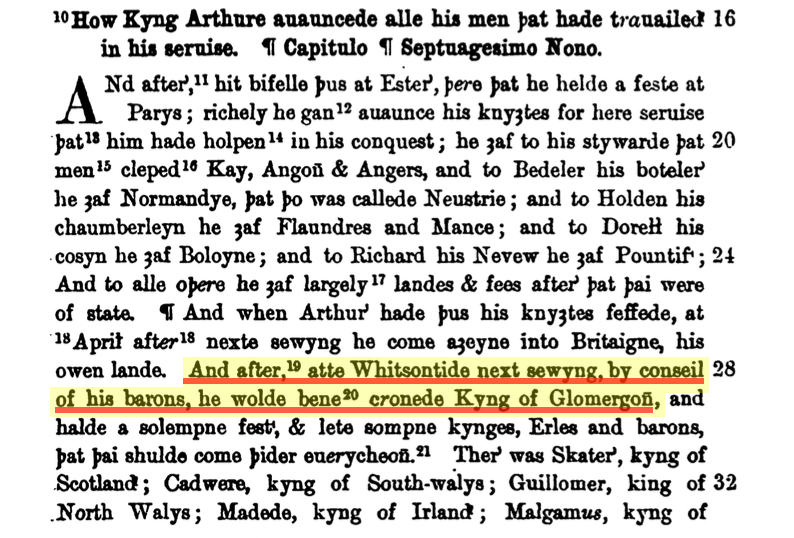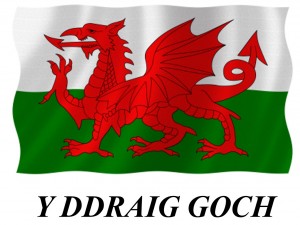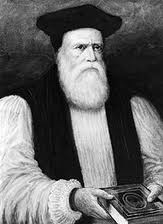We remember those lost 50 years ago in Aberfan
The quiet town of Aberfan was shaken to its core in 1966, when a landslide crushed homes and a school filled with children.
While we look to the future and what it holds for Wales, we remember those lost that fall morning.
Read More“The Brut” and King Arthur II – historic texts link ruler to Wales
Centuries-old manuscripts detailing the history of Great Britain tell the story of a warrior king who was crowned ruler of Glamorgan, a region in Southeastern Wales near present-day Cardiff.
Historians hesitate to admit whether King Arthur II actually existed, but most would scoff at the notion that he not only lived, but that he was really from Wales. However, one of the most comprehensive histories of early Britain, written by the scribes of the day and finally curated about a century ago, explain precisely the quests and victories of King Arthur and his roundtable knights.
“The Brut or The Chronicles of England: Part I” was compiled and annotated in 1906 by Friedrich W.D. Brie, Ph.D., for the Early English Text Society. It tells us that King Arthur was a king of Briton. It also tells us that he was a Welsh king – not English like so many scholars of British history believe.
Dr. Brie culled from dozens of source manuscripts to compile the lengthy tome of more than 600 pages embracing the period from the arrival of Albyne, circa 1560 B.C., and Brutus, circa 504 B.C., to about 1480 A.D. Although there is some speculation about the accuracy of “The Brut,” scholars say it was the second-most copied text in 14th century Britain, second only to the Wycliffe Bible.
We know from other texts that Arthur lived in the sixth century. Following his conquest of France, Arthur divided up the land among his supporters then went home to Briton. It was then that the texts say he was “crowned king of Glamorgan.”
“The Brut” does not offer an account of Arthur’s death, only that he handed over his kingdom when he felt that he was no longer able to rule. There is evidence that King Arthur met his demise during a journey to America following a comet’s crossing over Briton and wreaking havoc in South America.
Read MoreThe ‘St. Patrick’ No One Wants To Hear About
There were 3 possibilities of a Saint Patrick, all Khumric “Welsh” too.
- Patrick, the son of Alfred, the son of Goronwy, of Gwareddog on Arvon who lived in the time of St. Elvod, and belonged to the college of Cybi in Anglesey, of which he was a saint. But not the Patrick of Ireland.
- Patrick son of Gwyndeg and brother of Gynyr of Caer Gawch. Ther are many saints in the progeny and family Gynyr of Caer Gawch. Non Vendigaid (the Blessed), the mother of St. David and the daughter of Gynyr of Caer Gawch etc., refer to Britainy – late 5th early 6th century. The dates do not fit the time period.
The “Life of St Patrick” is quite explicit. He was born at Tair Onen c. AD 373 (Three Ash Trees) a tiny hamlet around 1 mile east of Cowbridge in Glamorgan, South Wales. He attended the Monastery on the coast later known as Llan Illtyd Fawr, now Llantwit Major (an English concealing name).
Irish raiders – who practised sudden hit and run raids before the military could get at them, seized Patrick.
One way or another he was set free when the eldest son of Cunada Wledig crossed over and seized South East Ireland – Leinster, where he set himself up as king there.
This set Patrick free and he and later returned to South East Wales.
Patrick then wanted to go back to Ireland to spread Christianity there.
The South East Wales Apostolic Christian rulers refused to allow this.
So Patrick went to Gaul-France where the ‘British Church’ had spread and to to persuade the religious chiefs there to ordain him to go to spread Christianity in Ireland.
They wanted to get rid of him – so they ordained him and told him to go spread Christianity in Ireland.
A Welsh King had conquered Leinster and was ruling that South East region of Ireland and he was the eldest son of the Cuneda Wledig- Battle Sovereign – who had ejected Irish settlers from Gwynedd in North West Wales.
The British-Welsh seized Leinster in order to end the Irish nuisance.
In the soon to be released writings it is obvious that the North Welsh Prince who set himself up in that part of Ireland, was the person who then set Patrick free and allowed him to return to Wales.
Patrick then got the idea of returned to that Leinster zone and spreading Christianity.
Our researchers have investigated all this but have not published the full account of it yet. Book to be coming soon, ‘The Real St. Patrick’ – Michael A. Clark contributing editor based on the works of M A Kelly
The Irish do not like the idea of anyone conquering parts of Ireland in antiquity but facts are facts.
*************************************************************************************
MORE…that St Patrick “of Ireland” came from Glamorgan in South East Wales, King Arthur, II country. – Our researchers will be providing much more…
Anyway, more collaborating agree there were three old saints all named Patrick.
One was of around AD 550 – 600 and plainly from the North of Britain and no one thought he was the correct one.
The other two establishment loudly advertises St Patrick from Gwynedd in North Wales. They actually state that St Patrick was a son of Alfred an Englishman. They state that he was at Bangor Monastery. They state that he was in the time of Bishop Elfodd
As St Patrick is dated as being in Ireland circa AD 317 – 337 all this is strange. First, the Bangor Monastery was founded in the time of Maelgwn Gwynedd – ie around AD 570 – 600 A bit late for St Patrick of Ireland. Second the Bishop Elfodd is VERY WELL recorded and he was of the AD 790 – 820 era. Again some 500 years out of time. St Patrick was born at Tair Onen – Three Ash trees in Glamorgan about 1 mile East of Cowbridge – Bonaventum all very well recorded and he was educated at the great Llantwit Major Monastic College in Glamorgan.
This is the sort of blatant hypocrisy currently practised by the devious academic political establishment. Transfer Patrick – VERY WELL DETAILED RECORDED – out of South East Wales. Move him as far away as possible to the North West. Then shift him to an impossible time frame in a monastery that did not exist, Then make his Abbot-Bishop to be Elfodd who was known as The Traitor. Elfodd proposed transferring from Apostolic British Church to the Roman Catholic Church. This then suitably allows St Patrick to be transferred in religion. – Alan Wilson.
Read More
St. David, BIGGEST CELEBRATED WELSH DAY OF THE YEAR
 BIGGEST CELEBRATED WELSH DAY OF THE YEAR… St. David
BIGGEST CELEBRATED WELSH DAY OF THE YEAR… St. David
In our new history revealing capacity, we’re finding “previously discovered” and “untold” information.
What’s commonly known may not be all that accurate and many components are missing.
More about this subject at a later date.
Read More
National Anthem
…Our national anthem.
The history of the song written by James James and begins as a father and his son Evan James of Pontypridd wrote “The Land Of My Fathers in January of 1856. The popularity of the song arose during the Llangollen Eisteddfod of 1858 and has been sung at sports events continuously.
Mae hen wlad fy nhadau yn annwyl i mi,
Gwlad beirdd a chantorion, enwogion o fri;
Ei gwrol ryfelwyr, gwladgarwyr tra mad,
Dros ryddid collasant eu gwaed.
(Cytgan – Chorus)
Gwlad, gwlad, pleidiol wyf i’m gwlad.
Tra môr yn fur i’r bur hoff bau,
O bydded i’r hen iaith barhau.
Read More
Bishop William Morgan
This is the man that literally saved our language, which was already fragmenting into different dialects.
By translating the Bible into Welsh in 1588 from the original Greek and Hebrew it accomplished 6 effects:
1. It defied The Act of Union in political and cultural assimilation with England
2. It structured our language with strict standards
 3. It brought on the non-conformist movement, familiar to most of us, and we could possess the Holy Word spoken by familiar Welsh preachers in our own language instead of English or Latin and by English priests
3. It brought on the non-conformist movement, familiar to most of us, and we could possess the Holy Word spoken by familiar Welsh preachers in our own language instead of English or Latin and by English priests
4. It taught our people how to read and write
5. It brought forth our distinctive and world famous hymns
6. Its Word saved souls
Read More




